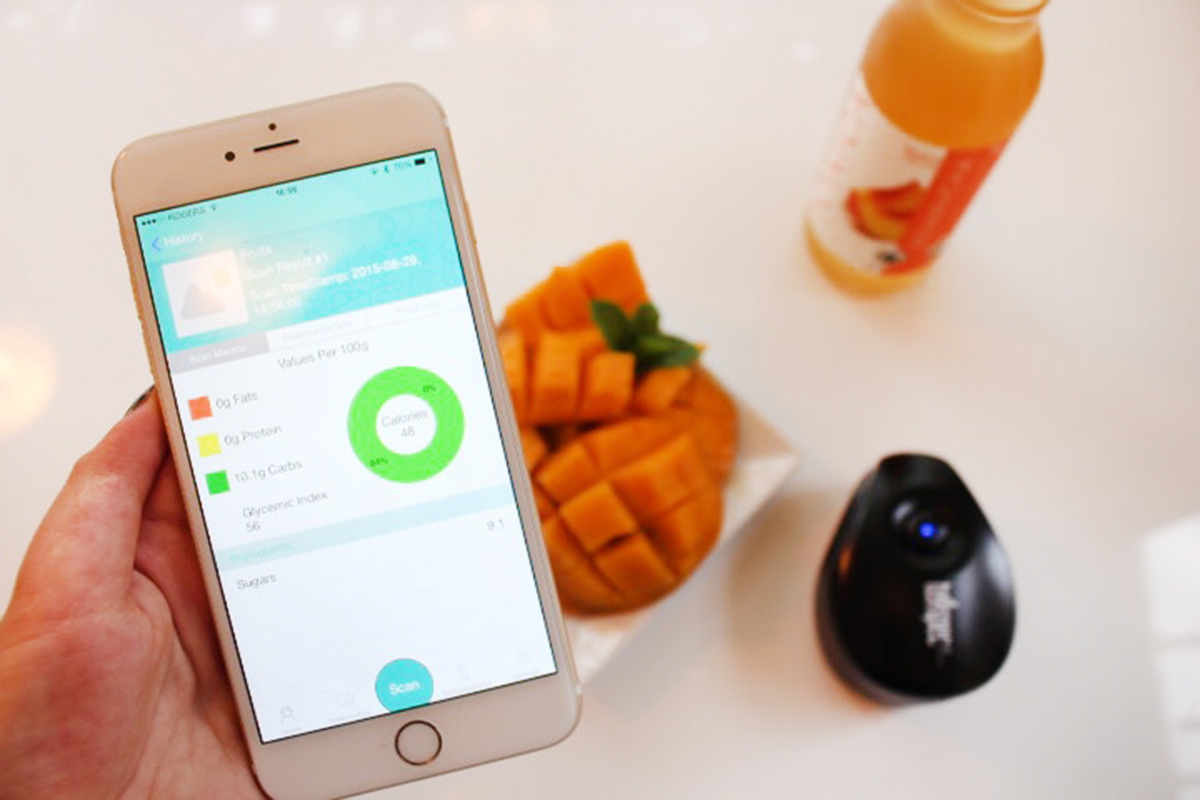Table of Contents
Two companies, SCiO and TellSpec, and working on hand-held scanners for consumer use. Based on the principles of spectroscopy, these scanners would be able to tell you whether the expensive fish in the fish counter was really white tuna or maybe just tilapia marked up in price, the actual variety of an apple, or whether a muffin contains gluten. These hand held scanners, which could run on a processor the size of a seed of quinoa, could be integrated with smart phones to answer questions such as:

- Is this product expensive scallops or cheaper shark?
- Is there E. coli in this salad mix?
- When was this apple picked?
- Is the beer watered down?
- Is this oil from olives or safflower?
- Is this fluid honey or sugar syrup?
- Does this organic spinach contain more lutein than conventional spinach?
- Is this orange juice a better source of vitamin C than the other brand?
- Does this "dairy-free" product really contain dairy?
- Are their pesticides on these peaches?
The new optical scanners work on the same principle as a prism. Prisms separate light into its constituent colors. Different substances absorb and reflect different colors. We may not be able to detect individual wavelengths when looking at a food item, but chemicals and ingredients in the food will reflect certain wavelengths of light more strongly. The scanner will detect variations in those wavelengths and compare them to a massive database to detect whether a chemical or an ingredient is present, and how much.
The problem with this kind of technology would seem to be that it would take a tremendous amount of research to identify spectroscopic color profiles for one food product after another. Not only would the technology company have to identify the difference, say, between a Fuji apple and a Honeycrisp apple, it would have to account for differences between growers, when the apple was picked, how long it was stored, how long it had been on the display counter, and so on. However, TellSpec has come up with a way around this problem. The company's engineers have designed sampling algorithms and learning programs that circumvent the need for years of lab work. The TellSpec device works like this:
- A hand held scanner measures light coming off the test food. It measures the number of photos per wavelength reflected by the food.
- The processor turns the raw data into a graph spectrum, a "fingerprint" of the food. Each food has its own fingerprint.
- The processor transmits the fingerprint of the food to your smartphone through Bluetooth.
- Your smartphone uses its cell or wifi connection to transmit the fingerprint to a database in the cloud. TellSpec stores the data in your file for future use, and transmits outputs from the data analysis back to your phone, where they are displayed in an easy to read format.
READ Carblover's Diet- 10 Carb Foods that Burn Fat
While this technology is something that won't be available until the future, it's not the distant future. The device is commercially available for $1250 during beta-testing now, and it will be on sale for $399 in August of 2016. Better freshness, purity, flavor, and quality will be yours, and because the market will also have access to the technology, better food will reach the supermarket floor.
- Tamar Haspel. This groundbreaking technology will soon let us see exactly what’s in our food. Washington Post. 26 March 2016.
- Photo courtesy of tellspec: www.flickr.com/photos/135375307@N02/20706369724/
- Infographic by SteadyHealth.com


Your thoughts on this